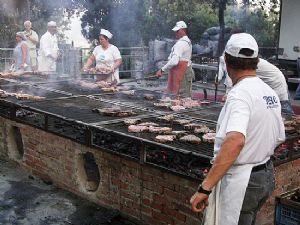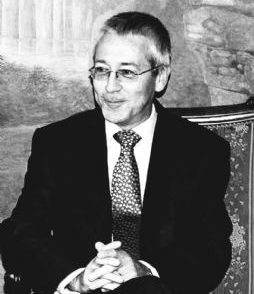Who were the key
figures in forging unity Italy 150 years ago? Some of them were widely known in
the Risorgimento, but the roles that others played have emerged over time.
Women hid rebels, nursed wounds, and raised funds for the cause. Here, meet
some of the men and women of the Risorgimento.
Victor
Emanuel II
Vittorio
Emanuele Maria Alberto Eugenio Ferdinando
Tommaso, king of Piedmont, Savoy, and Sardinia from 1849 to 1861, was the first
king of united Italy. He negotiated his royal alliances to get England and
France (Napoleon III ended up betraying him) on his side during the Crimean
War, and was an early symbol of the Italian Risorgimento, which he supported,
weary of being a puppet of so many foreign forces. Excommunicated from the
Catholic Church twice for fighting the papal army in the name of Italian unity,
he supported the Expedition of the Thousand, which won the Kingdom of Two
Sicilies and successfully got Tuscany, Modena, Parma and Romagna to side with
Sardinia-Piedmont. After taking the Marche and Umbria, he defeated the papal
army and at Teano met Garibaldi, who gave him control of Southern Italy as
well. He later took Rome, Veneto and Trentino, the last holdouts.
Camillo
Cavour
Camillo
Cavour founded the Italian Liberal Party
and a newspaper, Il Risorgimento.
He was prime minister of the Kingdom of Piedmont-Sardinia throughout the Second
Italian War of Independence and the entirety of Garibaldi’s later escapades. As
the primary diplomat throughout the Risorgimento, doing the work of a king but
without a crown, he was responsible for the terms that ‘traded’ Nice and Savoy
for Tuscany and Emilia, two regions hungry for unity. He and Garibaldi clashed
multiple times: over Nice, over Cavour’s refusal to send a Piedmontese army to
Sicily, and yet again when he attempted to keep Garibaldi out of Naples. Cavour
died just three months after the foundation of the Kingdom of Italy. A
lesser-known fact: Cavour is responsible for importing French enologist Louis
Oudart into Piemonte to improve the region’s winemaking techniques. The result
was the Barolo, of which he is considered the ‘father.’
Giuseppe
Mazzini
His was the voice of Italian unity. He political life began when he joined the Carbonari,
a membership that earned him the first of many exiles, first in Geneva, then in
Marseille. In Marseille, among other Italian exiles, he proposed the idea of
revolution as a means for unity, and, more than 100 years before the European
Unity became reailty, he advocated a united Europe. He formed La
Giovine Italia, a patriotic movement for unity that
was copied in Germany, Poland, Switzerland and even Turkey; it was met with
success with military officers in many parts of Italy. Mazzini lit Risorgimento
spirit in the patriots who would later execute unification. He failed multiple
times to lead ambitious municipal insurrections, efforts that earned him
another exile, this time in England, from which he wrote the Apostleship
of the People. Although he stepped into Italy only
a few times after his first exile, even becoming ‘triumvir’ of Rome when it was
a Republic in 1848 and Pius IX was forced to flee, his visit were brief. The
French got the pope back in Rome and Mazzini left the country again. After
another set of failed riots, Mazzini stuck to the sidelines of the
Risorgimento, dying in Pisa under a fake name (see pg. 4).
Giuseppe
Garibaldi
Giuseppe
Garibaldi is the face of Italian unity. Every
town in Italy has a street, a piazza, school or building named after him. Born
in Nice in July 1807, Garibaldi started out in coastal trade, a job that took
him to Russia, where he met Giovanni Battista Cuneo, a member of Mazzini’s La
Giovine Italia. Garibaldi joined the society,
swearing to dedicate his life to the struggle to liberate Italy from Austrian
dictatorship. He then began his military career. After proving himself a skilled
military leader and fighter in a smattering of South American civil wars and
enduring the first of his many exiles, dressed in a then-trademark poncho and
sombrero, he returned to Italy during the revolutions of 1848. He suffered
devastating defeats by Austria and France, lost his wife, Anita, and was forced
into exile again in 1850, going to New York, where, with other exiled Italians,
he lived in a cottage (now the Garibaldi Memorial) and worked in a candle
factory. After a brief stint in Central America masked as ‘Giuseppe Pane,’ he
returned to Italy in 1854 and in 1859, was major general of the Second Italian
War of Independence, winning many victories against the Austrians. In 1860, he
re-entered military life after uprisings in Messina and Palermo, in the
independent Kingdom of Two Sicilies, proved successful. He gathered 1,000
volunteers, Garibaldi’s famous Mille, stormed from South to North loss-by-win
and met the equally successful Victor Emmanuel II in Teano, the most important
event in modern Italian history: there, they symbolically seamed together a
previously disjointed peninsula.
Jessie
White Mario
Jessie
White Mario, aka ‘Hurricane Jessie,’ was an
expat who, like so many before and after her, grew deep roots on the peninsula.
British by birth, educated at the Sorbonne1852 to 1854 (where she met Mrs. Emma
Roberts, Giuseppe Garibaldi’s supposed fiancée), she was a naturalized Italian,
took up the cause of Italian unity and was a nurse to Garibaldi’s soldiers in
four separate wars. A philanthropist and journalist, she wrote a famous
biography of Garibaldi. Like many in Britain, she had heard of the Austrian,
French and Bourbon dictatorships on the peninsula and after meeting Garibaldi
in London, found her life’s calling as a propagandist for unity, working with
Mazzini during his exile in London and writing about the cause in English
newspapers. She was among the first correspondents about the Risorgimento,
giving lectures and raising funds. Her relationship with Mazzini was
particularly useful to the cause: when he returned to Genoa with her, her
celebrity deflected attention from Mazzini, who planned (unsuccessfully) to
break patriots out of a Bourbon prison near Naples. Her marriage to Alberto
Mario, a member of Garibaldi’s staff, took her to battles in Genoa, Sicily,
battlefields near Venice and Rome and even against Germans in eastern France,
where she was a nurse. She remains one of the most famous and beloved
expatriates in Italian history.
One
of the many unsung
heroes of the Risorgimento is Cristina Trivulzio
Belgiojoso, a giardiniera,
as female members of the patriotic Carbonari movement
were known. Today she is called the ‘star of the Risorgimento.’ A wealthy
heiress, she was forced into exile in France for her revolutionary activities,
moved to Paris and suddenly found herself penniless. Nonethless, she
established a salon frequented by Italian revolutionaries, including Cavour.
During the 1848 revolutions, she returned to Italy to fight in the Milanese
uprisings alongside the soldiers she had financed and helped organize. In the
short-lived Roman Republic, she served as a hospital director, but with the
arrival of the French, she fled again, this time to the Middle East, where she
wrote about the conditions of Arab women. After living for eight years in
Turkey, she returned to Italy in 1856 to again work alongside Cavour until
unity was achieved.
Other
heroes of the Risogimento include Chiara Maffei,
famed for her Salotto Maffei, where a collection of scholars, literati and
pro-Risorgimento revolutionaries gathered. Corriere
della Sera calls her the ‘Hillary Clinton of
the Risorgimento,’ since she had all the makings of a foreign minister. Giuditta
Bellerio Sidoli, widow of a Carbonari member, was exiled to Geneva during particularly harsh Austrian
counter-revolutionary measures. She later settled in Marseille, where her home
became a famous haven for revolutionary exiles, including Mazzini, with whom
she had a long love affair and a son. She handled the finances for his Giovine
Italia, followed Mazzini around the world
and took care of him as his health deteriorated over the years. She was never
able to return to her home country during the Risorgimento.







